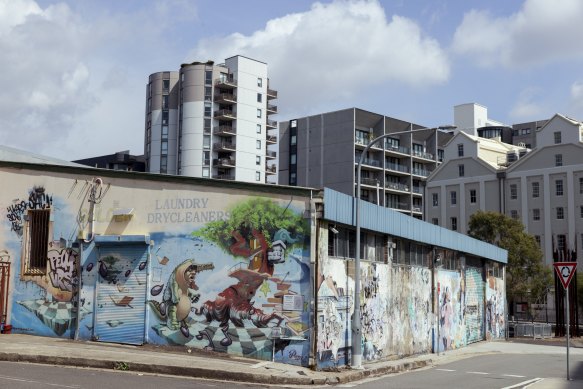- Exclusive
- National
- NSW
- Affordable housing
Leaked housing policy shows council rules will be able to scuttle projects
By Michael Koziol and Max Maddison
As few as one in six apartment projects would qualify for affordable housing bonuses under a draft version of the Minns government’s policy, developers say, because local council regulations will be allowed to scuttle housing projects that don’t comply.
Draft legislation and guidelines – obtained by the Herald – reveal the government’s proposed height and floor space bonus for developments that contain affordable housing will be constrained by a web of rules about how and where the bonuses can be claimed.

Developers have warned few projects will end up qualifying for a density bonus under the draft version of the scheme.Credit: Dominic Lorrimer
While the draft version is liable to change – and industry sources indicated the government had become more open to negotiation in the weeks since it was circulated – some developers remain concerned the initiative will be a flop.
Billbergia development director Rick Graf said the premier’s good intentions to lift housing supply would be worthless if bureaucrats insisted local council rules were “perfect, and therefore unable to be overridden by meritorious projects”.
The draft guidelines stipulate: “In-fill affordable housing bonuses do not override any provision in any local environmental plan”, such as controls on solar access and overshadowing.
For example, council rules may dictate that a development must not be approved if it causes any additional overshadowing of a public open space – even for 15 minutes – in the middle of winter.
In that case, “a portion of the height bonus may be able to be accommodated, up until the point where overshadowing would occur”, the guidelines say.
“Local development standards should be applied flexibly and need to be balanced against the government’s policy intent to realise more affordable housing.”
The plan, announced by Premier Chris Minns in June, was to give developers a 30 per cent height and floor space bonus for large developments containing at least 15 per cent affordable housing. They would also have a faster approval pathway by being labelled “state significant”.
Under the draft policy, if council rules prohibit the full height bonus, a developer may apply for a variation, for example, it could promise 10 per cent affordable housing in return for 20 per cent more height.
But in that case, the project would no longer be classed as state significant, and would need to go through the council or local planning panel.
The bonus is designed to apply to in-fill development near existing infrastructure. As such, it will only apply to projects within 800 metres’ walking distance of a train station, light rail stop or ferry wharf, 400 metres of a bus stop, or 800 metres of land zoned as a town centre or for mixed-use.
Lisa Sorrentino, head of development at community housing provider City West Housing, said just one of six projects she has in the pipeline would be eligible for the bonus – about 30 units on top of the planned 700. That is partly because the City of Sydney is exempt from the scheme.
“The devil’s in the detail,” Sorrentino told an Urban Development Institute of Australia (UDIA) conference on Wednesday. “The more detail we get, the more pessimistic the people I talk to get about these programs actually being able to deliver.”
Graf said fewer than 20 per cent of Billbergia’s sites would be eligible for a bonus under a strict interpretation of the proposed rules.
The draft legislation also shows affordable housing built under the bonus can revert to the full market price after 15 years, contrary to the community housing sector’s call to make it permanent.
Planning Minister Paul Scully did not answer specific questions about the draft, but in a statement the department said consultation was ongoing. “To date, there have been 69 submissions received and 15 feedback sessions conducted with industry, councils, and community housing providers.”
In line with the National Housing Accord, NSW is tasked with building 376,000 homes in the next five years, including 15,800 social and affordable dwellings.
But NSW Planning Department executive Monica Gibson told the UDIA conference on Wednesday the government does not know how many affordable homes the state is building.
“We, at the moment, can’t even count the number of affordable homes that are being delivered in NSW because we don’t have the right checkbox in our planning portal,” she said.
Analysis by the Grattan Institute, to be presented at a NSW housing summit on Thursday, found if the state’s targets are achieved and sustained into the 2030s, NSW rents could be 15 per cent lower than they otherwise would be by 2033-34, saving renters $10 billion over the decade.
Economic policy director Brendan Coates said the target was achievable if NSW changed planning rules (including relaxing minimum floor space ratios), linked councils’ housing targets to local infrastructure funding, rezoned inner-city land and built more social housing.
He said the state’s construction workforce had grown by a third since the start of the last boom in 2016. “The downturn in the construction of commercial office space in the wake of the pandemic is also expected to free up workers that could build housing.”
Start the day with a summary of the day’s most important and interesting stories, analysis and insights. Sign up for our Morning Edition newsletter.